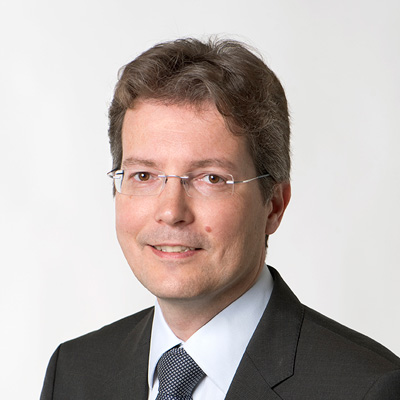Aerospace supplier ensures liquidity during the coronavirus crisis : World-leading aerospace company on a secure footing thanks to a cost transformation
The company, a supplier to aircraft manufacturers, has achieved strong and organic growth in recent years. To enable it to continue to expand in an optimal manner, the company had planned to sustainably optimize its structural costs via restructuring, assisted by Horváth. But things turned out differently: In the course of the project, the coronavirus pandemic took hold and the company's order backlog was decimated. As a result, it was suddenly facing a 50 percent drop in sales. Together with Horváth, the company's requirements were adapted in line with the prevailing circumstances – and to great effect. The technology manufacturer successfully completed a comprehensive transformation. Its business is now significantly more "crisis-proof".
As a prominent name within the industry, this Tier 1 supplier of high-quality fiber composite components for aerospace customers generated annual sales of more than 750 million euros before the coronavirus pandemic. During previous growth phases, the organization was expanded vertically, which significantly increased the existing structural costs. The initial goal of the project with Horváth was to sustainably reduce the company's fixed costs and thus lay the foundations for its planned future growth.
Organizational challenges facing the company :
The company's strength lies in its customer focus and adaptability to customer requests. Although agility is "lived" throughout the business, in practice this had led to overlapping areas of responsibility, excessive coordination work, and massive redundancies within the organization. The core functions were not clearly defined and accountability among the various business units was something of a gray area. In addition, there was clear mistrust between departments, which resulted in many activities being duplicated.

Impact of the coronavirus pandemic :
The travel restrictions imposed during the initial lockdowns triggered a wave of order cancellations. The aviation industry abruptly slid from a growth phase into a recession. This made it necessary to increase the company's savings targets during the project. The restructuring, initially planned in the area of indirect costs, was extended to include direct costs. Due to the complex initial situation following a period of (rapid) growth as well as the volatile future outlook, this endeavor was seen as a lighthouse project for the future direction of the company.
Horváth's approach to successful cost transformation :
In order to sustainably optimize the structural costs and increase the efficiency of the organization, functional areas such as purchasing, R&D, program management, HR, IT, finance, and production were all analyzed. The organizational structure as well as the personnel and overhead costs were transparently merged, and a benchmarking process was established for the focus areas. The consulting team analyzed key data and metrics across the company and worked with the managing board to quantify the goals of the cost-reduction initiative. The potential savings soon became apparent and the overarching goal was subdivided among the various departments accordingly.
Acceptance of the necessary changes by all stakeholders, from the CEO to the division managers, is an essential prerequisite for a successful cost transformation. The project team therefore developed the necessary measures to achieve the defined goals in consultation with the division managers. All stakeholders worked together to identify latent cross-departmental potential. The focus was on optimizing areas of responsibility and the associated processes across the various divisions and core functions. Outsourced areas were integrated, shareholdings sold, hierarchy levels reduced, management margins increased, and processes adapted. This eliminated both the high coordination costs and the internal redundancies. As a result of this process, more than 100 ideas for optimizing the structural costs emerged. Ultimately, these then created the impetus for a holistic transformation program.
Ready for take-off – thanks to an optimized organizational and operational structure :
This aerospace company has won major contracts in the area of lightweight applications in recent years. As a result, the scope of its program management has grown steadily. In this area in particular, the structural and process organization was therefore closely scrutinized, and optimization measures were derived. For example, the company adjusted the size of individual departments and streamlined its complex process landscape to reduce costs in all divisions.

Insourcing of logistics to consolidate value creation :
The team was also able to achieve improvements in the indirect areas of logistics. The different collective agreements for aviation and logistics, and in some cases insufficiently standardized processes between the plants, presented a challenge. To address this, the consulting team conceptualized a detailed business case for the vertical integration of the logistics processes. This resulted in the creation of a competence center that manages important operational tasks for the numerous sites.

A cockpit for customized tracking :
A Project Portfolio Management (PPM) Office was set up to implement the measures developed via the project. Reporting directly to the managing board, it managed the individual initiatives, led the decision-making process for new measures, and defined the requisite standards and templates. This made it possible to condense the initial hypotheses, of which there were over 100, into around 20 projects, along with the corresponding measures and defined responsibilities for detailing and implementation.
To make the projects' progress and success quantifiable, the Project Portfolio Management Office developed a customized tracking system that records all measures.
The Horváth project team consisted of up to 15 people, all of whom are experts in their fields. Thanks to the successful cost transformation, the client was able to weather the coronavirus pandemic better than many other companies and is now back in the black and ideally positioned for the future.
Horváth supported us with their extensive expertise in restructuring. The project laid the perfect foundations for further optimization steps, which became necessary due to the coronavirus crisis, among other things.
Read here how we can support you in sustainably optimizing your structural costs through reorganization.
Bilderquelle: Adobe Stoch, Shutterstock
Your Contact

Dr. Stefan Bergsmann

Christoph Weber

